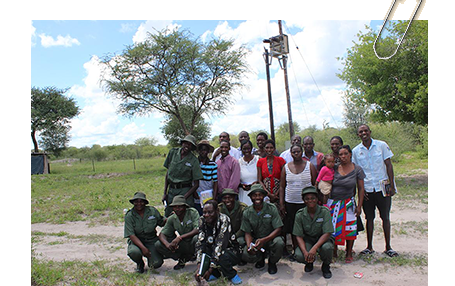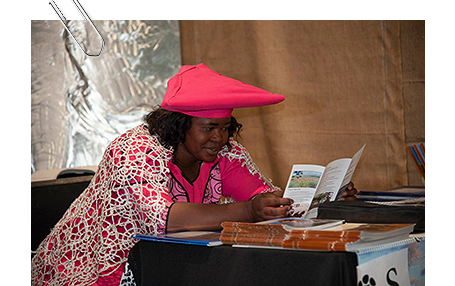Conservancies make an impact on rural development and nature conservation
This year marks the 35th anniversary of the Community-Based Natural Resource Management (CBNRM) movement in Namibia. Namibia should not only celebrate the incredible recovery of wildlife number in areas where they formerly perished (and near extinct as in the case of the black rhino) but also becoming a model for much of Africa and the world in turning wildlife into an economic asset for rural communities. IRDNC pioneered initial community conservation initiatives and laid the foundations for Namibia’s communal conservancies and community forests, building conservation from the grassroots working with local communities. These legally gazetted bodies made it possible for rural communities to reap the benefits of flourishing wildlife through joint-venture tourism, conservation hunting, indigenous natural products, own-use game meat and live game sales.
Benefits from conservation are distributed to registered members of the conservancies as dividends or social benefits, or by the private sector as fringe benefits and donations. These go to communities or individual households in a form of in-kind benefits such as meat distribution, cash benefits paid to conservancy members from conservancy income and social benefits from investments in community initiatives such as education facilities and health services. In 2018, a total of 86 community-based organisations covering 166 267 km2 (19.6% of national land area), returned N$ 132.8 million of benefits to 212 092 conservancy members (about 10% of Namibian population). This includes N$ 12.8 million worth of meat distributed to conservancy residents, N$ 65.8 million total cash to resident from enterprise wages, N$ 16 million cash directly distributed to residents as dividends and the remainder is used to support community projects.
In the Kunene Region where the CBNRM movement originated, Sesfontein Conservancy is one of the conservancies making a significant contribution in their community. The Chairperson, Mr Usiel Naub, was pleased to report that this year alone, his conservancy contributed N$ 500 000 to three villages within their conservancy, invested N$ 150 000 in boreholes to bring water closer to the villages, N$ 5000 to ten students each to cover registration fees at academic institutions, N$ 2000 each to 20 youth group members for their own advancement, N$ 4,000 monthly to pay salaries for four teachers at a local kindergarten and N$ 1200 monthly to each of the local Traditional Authority leaders in their conservancy. In Zambezi Region, there are many investment examples in community projects such as Bamunu Conservancy purchasing and installing six transformers in 2018 to electrify villages, implementing a Human-Wildlife Conflict compensation scheme with N$ 3000 payment to farmers per cow, employing 42 staff members from the community, setting up a funeral cover scheme with 11 other conservancies in the region and allowing harvesters of Devil’s Claw (used as medicinal plant) to earn up to N$ 60 000 last year.
Although there are still many conservancies making minimal income, these community-based organisations represent a key structure in rural empowerment and development, improving local livelihoods while conserving biodiversity in areas where marginalised communities have maintained pristine environments. This is the belief of Maharukua Inovandu – Chairwoman of Ongongo Conservancy, Keith Mburura – Otjikondavirongo Conservancy Chairperson, Musaso Kaiti – the former committee member of Ombujokanguindi Conservancy, and the senior game guard from Okanguati Conservancy – Kakondo Ueriunga, who each said that their conservancies will remain committed to protecting the environment and wildlife for future generations to benefit.

- Bamunu Conservancy members and game guards standing next to their electricity transformer. ZAMBEZI REGION

- Musaso Kaiti - Former committee member of Ombujokanguindi Conservancy.
KUNENE REGION



